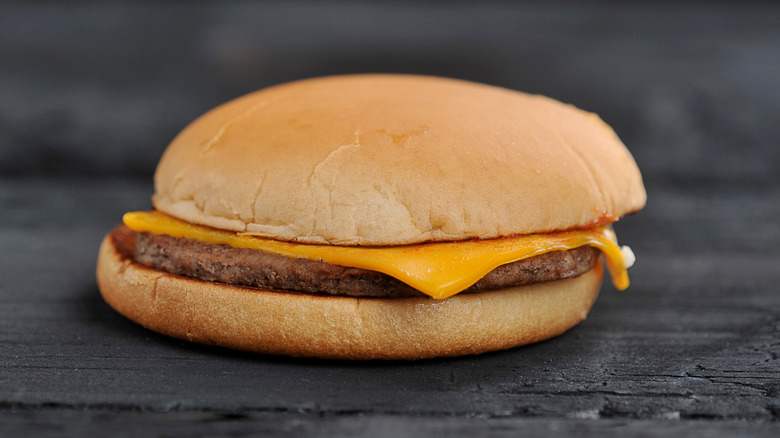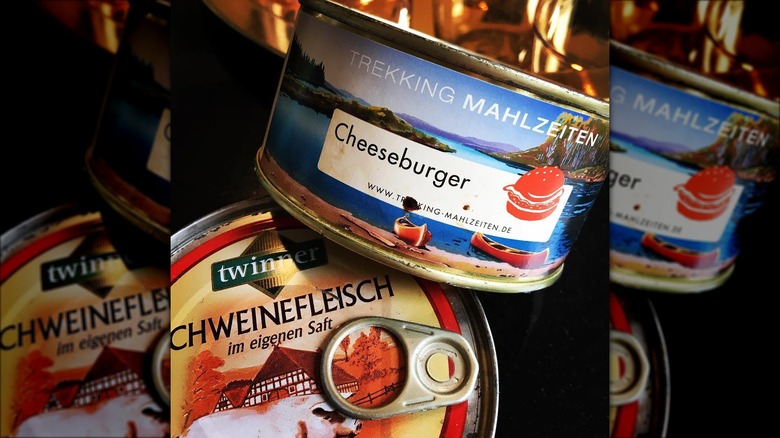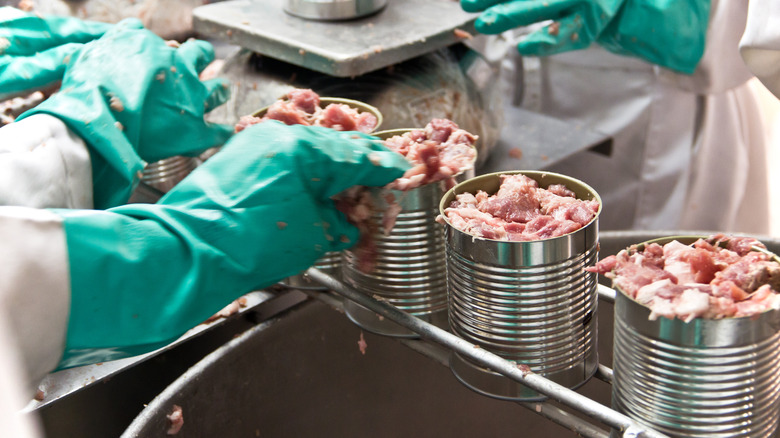Canned Cheeseburgers Started Off As Fuel For Hikers
French inventor Nicolas Appert pioneered the concept of canning as a means of food preservation in the late 18th century. By the early 19th century, Robert Ayars began experimenting with canning foods in the United States, preserving items like oysters, meats, fruits, and vegetables. Soon after, America became the leading producer of canned goods in the world, largely due to automated machinery. As the process became more streamlined and knowledge of food safety improved, the variety of products that could be sealed and stored for months expanded significantly. Among the most interesting canned items on the market are canned brown bread, boiled peanuts, and tamales. However, the canned cheeseburger might just be the most intriguing.
Introduced in 2008 by the Swiss brand Trekking-Mahlzeiten — a company that primarily serves outdoor adventurers and hikers, who often only have water and fire as cooking sources — the cheeseburger in a can was a fully cooked and assembled burger neatly packed inside a tin. The canned cheeseburger provided trekkers with a new meal option that simply needed to be boiled in hot water, then removed from the can and consumed.
Shortly after its introduction, the German-based camping supplies purveyor called The Adventure Company released its own version of a canned bacon cheeseburger. Although neither cheeseburger seems to be available now, they have become highly sought-after novelty items among collectors.
Canned cheeseburgers have gained attention online
After the release of these two canned cheeseburgers, it didn't take long for people — both outdoor enthusiasts and homebodies — to develop a fascination with such uncommon edibles, and tasting videos on social media followed. After YouTube user @TheWolfePit got his hands on a canned Steak House Burger from Germany, he translated the ingredients and nutritional information in a tasting video. The meal consisted of a seasoned meat patty, a wheat bun with sesame seeds, Gouda cheese, and a seasoning sauce that curiously included chocolate powder.
He explained that the entire burger contained 534 total calories, which seems like a moderate amount for any given meal, but certainly wouldn't meet a hiker's daily caloric needs. The biggest nutrition shocker was the sodium content, which came in at a whopping 3,910 milligrams (for context, the Food and Drug Administration recommends a daily sodium intake of less than 2,300 milligrams). Even though individuals who sweat a lot, such as athletes and hikers, may need additional sodium, the amount in this cheeseburger is notably high for a single meal. Additionally, this burger provided 26 grams of protein, 27 grams of fat, and 44 grams of carbohydrates.
Are canned cheeseburgers safe?
Is a shelf-stable cheeseburger that contains meat, cheese, and a liquid sauce safe to eat? The short answer is, it should be. Once sealed in a can, any type of canned protein must be heated to remove the air inside and kill any harmful bacteria that might remain. So, assuming the production company has followed all the necessary steps to safeguard its product against foodborne illness, a canned cheeseburger shouldn't make you sick. One unique aspect of the canned cheeseburger is that, unlike other types of canned meat and fish, it is not packed in liquid, which is typically added to canned proteins to occupy air space in the can.
Considering a cheeseburger includes a bread bun, packing it in liquid is inconceivable. Instead, canned cheeseburgers are first cooked, then assembled, canned, and heated again, which essentially cooks the burger a second time. While this process may not result in the ideal texture and flavor, it is edible.
Canned cheeseburgers may not necessarily be at the top of the list of canned meats you should buy, but if curiosity gets the best of you and you manage to find one, don't expect it to taste like a freshly grilled all-American cheeseburger.



